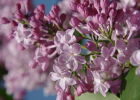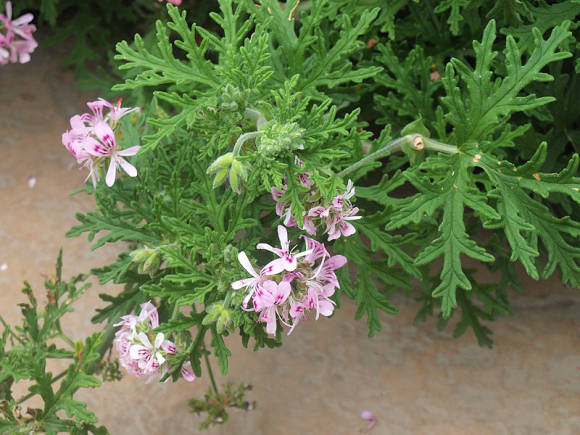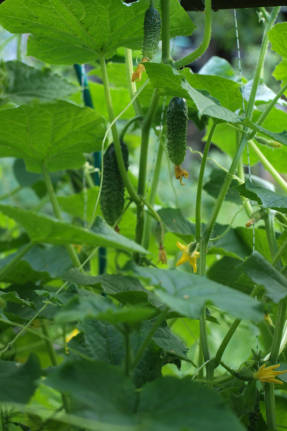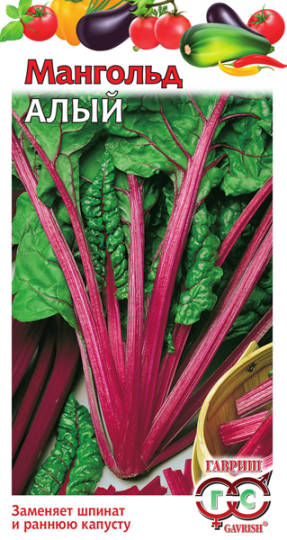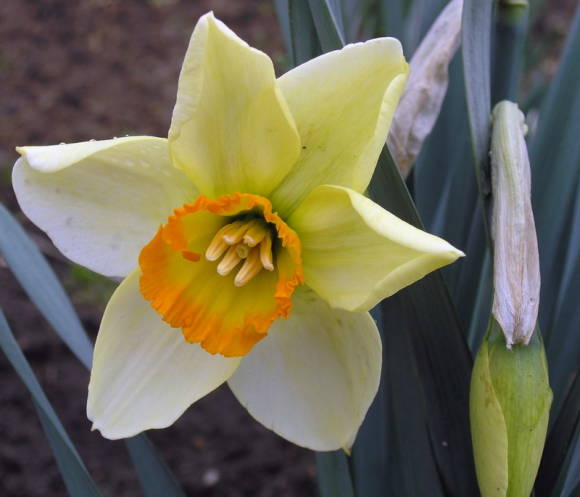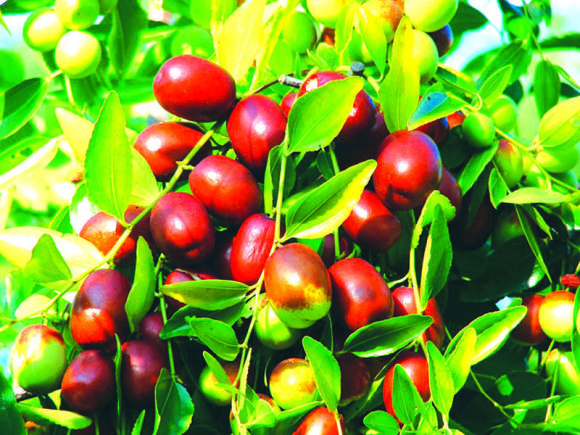
Continuation. The beginning is in the articles:
- Sacred Ziziphus: The Living Book of Names
- Popular varieties of ziziphus
Cultivation of ziziphus on the site
When choosing seedlings of Chinese dates, it is worth giving preference to early frost-resistant varieties, which are planted from March to May.
Ziziphus simply needs light, so it grows very poorly in shady areas, and the flowers always turn out to be a barren flower. For unabi, you need to choose a place on the site that is protected from drafts, but as much as possible accessible to the sun's rays. The plant perfectly tolerates direct sunlight. Even at temperatures above + 40C ° and without regular watering, the leaves do not dry out, and the fruits continue to develop normally.
It is preferable to plant seedlings in early spring, since during autumn plantings there is a serious likelihood of unabi freezing with the onset of early frosts. The top and bottom of the southern and southwestern slopes, as well as flat areas protected from the wind, are ideal for planting Chinese dates. The distance between adjacent plants should not be less than 2-3 m.
Planting pits measuring one meter by one meter must be prepared in advance and mineral fertilizers must be added to them along with diluted cow dung.
Young plants are buried in a hole no more than 10 cm, covered with soil and tamped, and then watered abundantly. For the best survival rate, it is necessary to mulch the soil under young plants, which are replaced by digging. When mulching is performed, organic matter is periodically introduced into the ground.
Ziziphus is a cross-pollinated plant that is unable to bear fruit on its own. Therefore, to obtain a harvest, it is necessary to plant several varieties of unabi at once on your site. The closer they are to each other (of course, taking into account the permissible requirements), the easier it will be for pollination.
Growing unabi on the site will not be difficult, and caring for it is simple. Sufficiently unpretentious to the composition of the soil, the plant will respond to additional fertilization with a bountiful harvest. Loamy soils are best suited for the plant, although it will grow well both on black soil and on gray soils. On highly fertile soils, the Chinese date will have strong leaves and side branches. They will need to be pruned regularly so that they do not darken the fruitful parts of the tree.
Watering should be done rarely and in small quantities, especially when there is no precipitation for a long time. Due to the structure of its root system, Ziziphus easily copes with drought, excessive moisture is detrimental to the plant, so watering should be metered. Although the complete drying out of the soil is harmful for the development of unabi and can lead to a rather poor harvest. But in June, when the ovary of fruits occurs, the plants need dryness, so watering should be completely stopped.
With the onset of the first growing season, you can feed the ziziphus. It is performed twice a season. With the onset of full fruiting, the amount of dressings is increased, using ready-made mineral fertilizers for these purposes.
Caring for the Chinese date also provides for the timely cleaning of the site from weeds, which are extremely undesirable neighbors of this plant.
Unabi is quite frost-hardy. Before the onset of the winter cold season, young seedlings are spudded, and their tops are wrapped in non-woven material. Depending on the variety, an adult plant can withstand cold temperatures from -15 to -30 ° C. Adult plants should be insulated only in those regions where the temperature in winter falls below -35 ° C.
Unabi is practically not susceptible to diseases and pests. It has a high ability to regenerate - after damage (fractures, prolonged drought), the bark and crown quickly recover.
The Chinese date needs to form a crown, but since a characteristic feature of this plant is its slow growth in the first year after planting, the formation of the crown can be started no earlier than a year or two after planting.
Most often, the crown is cupped with 4-5 main branches, which are placed around the trunk. In this case, the main shoot should be cut to 15-20 cm, and other branches should be shortened at the same level with it. An open crown, in which the tree does not have a leading shoot, allows you to increase the quantity and quality of the ziziphus crop. You can also form a crown in the form of a bush. In this case, the root shoots are cut or dug out for transplantation.
In the course of the growth of the tree, sanitary pruning of branches that grow inward is periodically carried out. A beautifully designed and elegant plant will decorate any garden, it will be healthy and can delight you with its flowering and harvest for a long time.
Varietal saplings of ziziphus, provided they are rooted and well maintained, can produce berries in the first year after planting in open ground.
Ziziphus opens late, which allows it to avoid residual spring frosts. Outwardly, not very attractive, but a lot of fragrant flowers appear, and their very pleasant, sweetish smell attracts a large number of insects. The flowering period lasts about 60 days. Despite the fact that some of the flowers remain non-pollinated, during fruiting, unabi, depending on the variety, can yield up to 25-30 kg, and record-breaking varieties - up to 60-80 kg of fruits from one adult plant. The non-simultaneous flowering of ziziphus also affects the ripening of the fruits, which also occurs unevenly. In a fine, warm autumn, harvesting of fruits can stretch from early September to late October, or even in December (in the southern regions). If the autumn is rainy, the harvest is harvested unripe, and the ripeness of the unabi picks up later; in dry autumn, it is better not to rush to harvest, but to let the fruits wither on the branches - then they will become tastier.
For fresh consumption, it is necessary to wait for the full ripening of the ziziphus fruits, and for processing they are removed from the branches when a light brown integumentary color appears on a third of the surface. In general, unabi fruits can be left on for a long time.
For accurate picking of fruits, special "combs" with teeth every 1 cm are used. With this "comb" the fruits of ziziphus are combed onto a film, after which they are separated from the fruitful shoots and leaves.
The Chinese date is a long-liver. Many unabis live for over 100 years. They actively bear fruit for about 50 years, for another 25 years the amount of the crop is reduced by 30-50%, but the fruits retain their high taste.
The tree can be propagated using seeds, cuttings, as well as by grafting or planting root suckers.
Growing ziziphus indoors
You can also grow this exotic miracle tree in a pot. This is an excellent plant for winter gardens, insulated verandas and loggias. In a room or winter garden, the ziziphus grows up to 2-3 m.
It is easy to grow it at home by germinating a soaked bone under a film in moist soil. Then the plant is transplanted into a small pot filled with a mixture of leafy and turfy soil and coarse sand in a 1: 1: 1 ratio.
At a young age, transplantation into a larger pot is carried out annually, and from 4-5 years of age - once every 3-4 years. The transplant is carried out only with the preservation of the earthen coma. The pot should be larger than the previous one by 15-20 cm in diameter. It is better to transplant ziziphus into soil, which is supplemented with phosphate fertilizers. Then the root system will grow better. After transplanting, the soil is watered a little, and the pot is placed in the sunniest place.
The Chinese date is not afraid of the direct sun. In winter, the temperature should be within + 5 ... + 10 ° С. In summer, the plant can be taken out into the garden, balcony or terrace. The plant easily tolerates dry indoor air.Watering is required in summer moderate, in winter - minimal. Do not allow the soil coma to dry out.
It is also necessary to carry out top dressing with full mineral fertilizer once a month from April to August. Leaf humus can be used as an organic top dressing, and in winter and spring, peat is added to the pot every two months.
Growing unabi in central Russia
Thanks to the work of breeders and the emergence of frost-resistant varieties, the Chinese date, although slowly, still goes beyond the tropical and subtropical regions. In our country, it is now cultivated not only in the Crimea and in the south of the Krasnodar Territory. Ziziphus, through the efforts of experienced amateur gardeners of the Rostov and Voronezh regions and even the Moscow region, pleases its owners with delicious fruits. Although, of course, you have to tinker with a delicate tree, too much depends on the vagaries of the weather and not every summer it is possible to harvest a good harvest.
Experienced gardeners are advised to choose early varieties with small fruits for the middle lane, as they are more hardy. Among such varieties, for example, Chinese 60 and 2A, Khurman, Candy, Yuzhanin, Sinit. To make it easier to prepare the "oriental guest" for frost, it is better to form from it not a tree, but a bush with a wide crown.
In the event that Chinese dates do not have time to fully ripen, the harvest will still have to be harvested before the first cold weather, and then put into storage and wait for ripening.
Undoubtedly, the cultivation of Chinese dates on the site will bring joy to any gardener. Unabi requires no more attention to itself than most of the garden plants we are used to. But unlike many other plants, ziziphus is a real long-liver, capable of delighting with its beauty and tasty and healthy fruits for a whole century. Moreover, the plant is very decorative. Every summer its branches will be completely covered with flowers, filling the garden with a light sweetish aroma and beckoning bees and bumblebees. Only after two months the flowers will fade, but many fruits will appear in their place - tasty and healthy, which can be eaten fresh, dried, dried, frozen, used to prepare a variety of delicacies. In the countries of the eastern region, the Chinese date is not for nothing considered a sacred tree, plant it in your garden and you will give health and longevity not only to yourself and your children, but even to your grandchildren and great-grandchildren!
Continued in the article:
- Useful properties of present ziziphus
